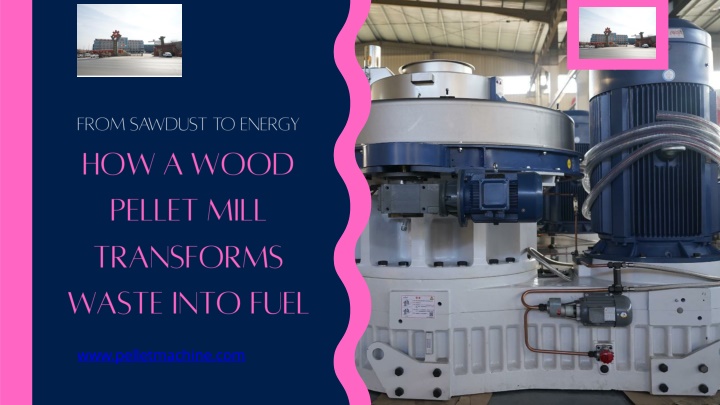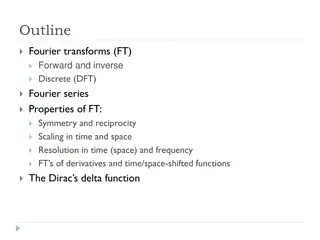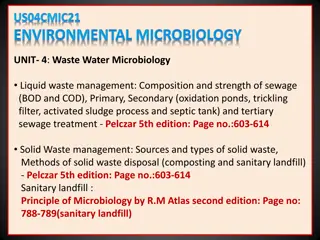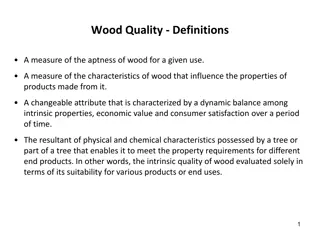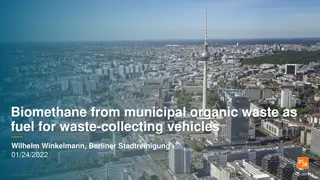From Sawdust to Energy: How a Wood Pellet Mill Transforms Waste into Fuel
This guide delves into the journey of sawdust from being a by-product of the lumber industry to becoming a highly efficient fuel source, thanks to the innovative process of wood pellet production.
Download Presentation

Please find below an Image/Link to download the presentation.
The content on the website is provided AS IS for your information and personal use only. It may not be sold, licensed, or shared on other websites without obtaining consent from the author.If you encounter any issues during the download, it is possible that the publisher has removed the file from their server.
You are allowed to download the files provided on this website for personal or commercial use, subject to the condition that they are used lawfully. All files are the property of their respective owners.
The content on the website is provided AS IS for your information and personal use only. It may not be sold, licensed, or shared on other websites without obtaining consent from the author.
E N D
Presentation Transcript
Dedicated to supporting sustainable energy production, Shandong Yulong Machine Co., Ltd. supplies advanced biomass pellet machines adept at handling a variety of materials like rice husk, straw, waste wood, and peanut shells. www.pelletmachine.com
Their commitment to eco-friendliness is evident in their R&D efforts, yielding equipment that can produce pellets useable as solid fuel for power generation, heating, or as organic fertilizer inputs. Their compressing molding equipment spearheads the shift towards low-carbon biomass energy solutions. Their wide range of solutions also include wood crusher, hammer mill, pellet packing machines, and more. www.pelletmachine.com
In the quest for renewable energy sources, wood pellets have emerged as a key player. With sustainability at the forefront of global energy conversations, the role of wood pellet mills in transforming waste into usable fuel cannot be overstated. This article delves into the journey of sawdust from being a by-product of the lumber industry to becoming a highly efficient fuel source, thanks to the innovative process of wood pellet production. www.pelletmachine.com
Wood pellets are small, cylindrical pieces made from compressed biomass, primarily sawdust and other wood waste from the lumber industry. Due to their compact size and uniform shape, they burn efficiently and produce a consistent output of energy, making them an ideal fuel for heating and, in some cases, power generation. www.pelletmachine.com
www.pelletmachine.com The journey from sawdust to energy begins at the wood pellet mill, where the transformation process is divided into several critical stages: The first step involves collecting the raw material, primarily sawdust, wood chips, and logging leftovers. This material is then dried to reduce its moisture content, a crucial step to ensure efficiency in the pelletizing process.
www.pelletmachine.com Once dry, the biomass goes through a grinding process, reducing it to a fine consistency. This homogenization ensures that the pellets have a uniform texture, facilitating the compression process that follows. At the heart of the wood pellet mill, the fine-ground wood dust is fed into a pelletizing machine. Here, it's subjected to high pressure, being squeezed through a die that shapes it into the characteristic small, dense pellets. This process also increases the temperature of the material, causing the lignin, a natural polymer in the wood, to act as a glue that holds the pellet together.
The newly formed pellets are hot and soft. The cooling process solidifies them, making them durable and easy to handle, store, and transport. The final step involves packaging the pellets for distribution and sale. They are typically bagged in small quantities for residential use or bulk-loaded for larger commercial applications. www.pelletmachine.com
The beauty of wood pellets lies in their sustainability. Wood pellet mills convert sawdust and wood waste, which would otherwise contribute to landfill, into a clean, combustible fuel. This process significantly reduces waste and provides an eco- friendly alternative to fossil fuels. Wood pellets are considered carbon-neutral. The carbon dioxide released during their combustion is roughly equal to the amount absorbed by the trees during their growth phase, creating a balanced cycle that minimally impacts the global carbon footprint. www.pelletmachine.com
The demand for wood pellets has seen exponential growth, especially in regions with strong commitments to reducing carbon emissions. They are used not only in residential heating systems but also in large-scale power plants to produce electricity. This adaptability, coupled with the environmental benefits, places wood pellets and, by extension, wood pellet mills, at the forefront of the renewable energy sector. Wood pellet mills play a crucial role in our transition to sustainable energy sources. By transforming sawdust and wood waste into compact, energy-rich pellets, they provide a solution that is both eco-friendly and efficient. As the world continues to move away from fossil fuels, the importance of wood pellet mills in our energy ecosystem is set to increase, highlighting the essential role of these facilities in ensuring a greener future. As a renowned wood pellet mills supplier, Yulong Machine Co., Ltd. seamlessly blends over two decades of expertise with cutting-edge technology to customize highly efficient wood pellet production processes, meeting the diverse needs of their global clientele with precision and reliability. www.pelletmachine.com
Xiuhui Town, Zhangqiu, Jinan, Shandong Province, China, 250201 inquiry@yljx168.com www.pelletmachine.com +86-156 6279 9469
